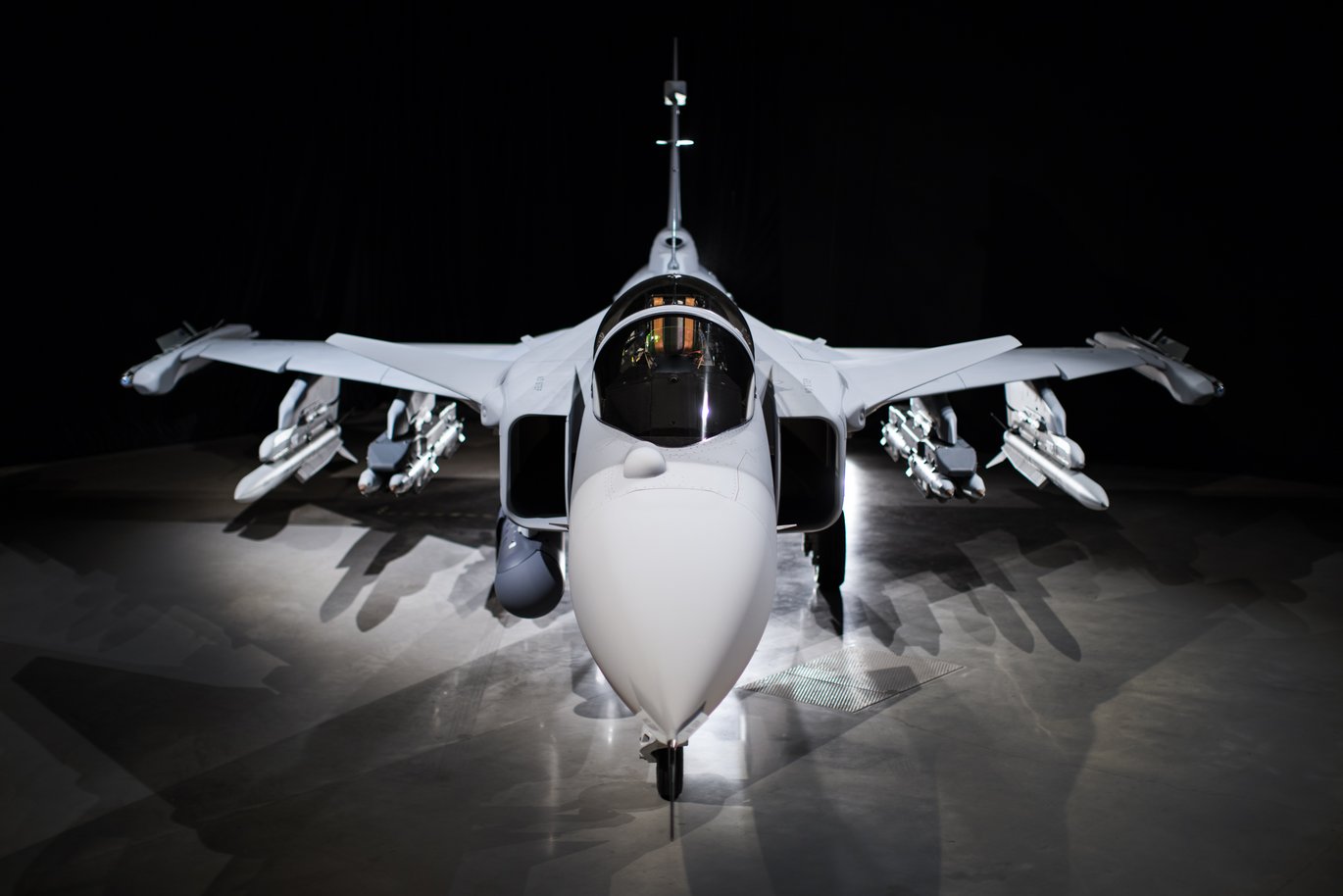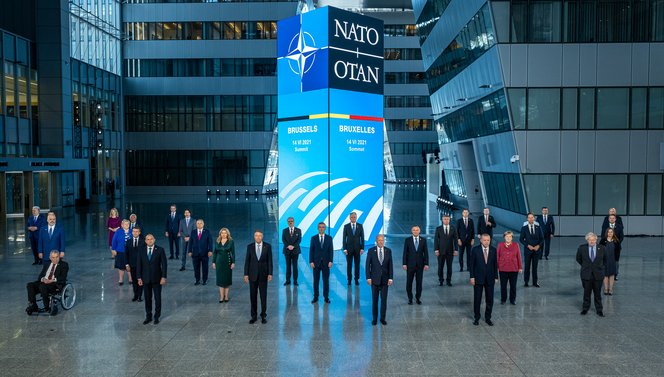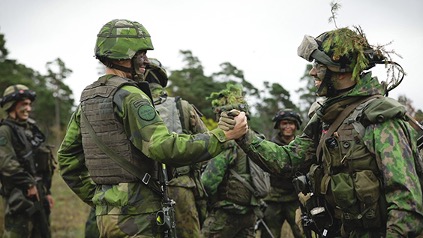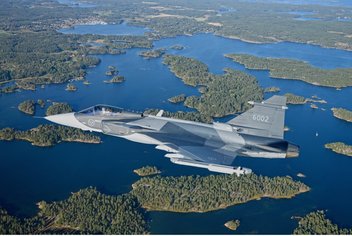Overview of Nordic defence and security cooperation
Post-war attempts to formalise Nordic security and defence cooperation in the late 1940s floundered and were overtaken by Norway, Denmark and Iceland becoming founding members of NATO in 1949. Throughout much of the second half of the 20th century, and even to this day, defence and security has been markedly absent from the agenda of Nordic cooperation, despite significant collaboration being undertaken on the ground. In the last 10 years, concrete attempts have been made to formalise cooperation with mixed results. Today, the Nordic countries view security as a broad concept that includes civil security, terror, cyber threats, climate change and the Arctic region.

From the end of the Second World War to today
After the Second World War, Sweden and Finland chose to adopt a policy of neutrality, while the other Nordic countries were more actively looking towards the West in terms of future defence cooperation. Security and defence was a sensitive topic, not least because of the region’s eastern neighbour, the Soviet Union, which had a new and complicated relationship with the Nordics, especially Finland (which had gained independence in 1917). In 1948, there was an attempt to form a Nordic defence union, but negotiations were difficult. In 1949, when Norway, Denmark and Iceland became founding members of NATO, talks on a Nordic defence union broke down completely. Today, these three countries remain members of NATO, unlike the other Nordic states. However, Sweden and Finland both maintain a strong partnership with NATO enabling them to participate in NATO-led operations and exercises as well as - at least to a certain extent - in the exchange of information and building military capabilities. The mutual security guarantee of the treaty, Article 5, does not however extend to them.
Although the Cold War period was marked by deepening Nordic cooperation generally, security and defence remained something that barely made it on to the agenda. This is highlighted by the fact that the Nordic Council and the Nordic Council of Ministers (founded in 1952 and 1971, respectively) still to this day do not have the mandate to tackle security issues and these topics rarely come up in their discussions. It is widely considered that the Nordic countries acted as pioneers in peacekeeping operations and other similar international engagements during the Cold War, and they still have an impressive track record in this regard. However, there was not much formal cooperation during the Cold War and, although a large amount of cooperation was – and is – done in the field, it must be said that it largely took place in the ‘shadow’ of the different national policies.

Defence integration became a major topic in the European arena during the Cold War, and later on, in the 1990s, developed into the European Security and Defence Policy (ESDP). After the Treaty of Lisbon in 2009, it became known as the European Union’s Common Security and Defence Policy (CSDP), which is a cooperation framework within which EU member states can operate together on missions and exercises, amongst other things. Norway and Iceland are not members of the EU which means they are left out of this cooperation to quite a large extent. Sweden and Finland participate actively in the CSDP, but Denmark has opted not to participate at all despite being an EU member.
Nordic security and defence cooperation really only started taking a major step forward in the 1990s when various cooperative structures and frameworks began to be set up. This culminated in 2009 when different cooperative committees and groups were unified in a new structure called Nordic Defence Cooperation (NORDEFCO).
The ‘Stoltenberg report’ initiates broader cooperation
In 2009, a report was published called ‘Nordic cooperation on foreign and security policy’ written and fronted by Thorvald Stoltenberg (b. 1931), the former Norwegian minister for foreign affairs. The report had been commissioned by the Nordic foreign ministers who had asked Stoltenberg to draw up proposals for closer cooperation among the Nordics in this particular area.
The report helped to propel security and defence issues to the forefront of Nordic cooperation. Stoltenberg suggested, for instance, greater collective responsibility and a mutually-binding security guarantee for the Nordic countries. A Nordic solidarity clause was agreed in Helsinki in 2011, although it was not formalized and cannot be compared to Article 5 of the North Atlantic Treaty or Article 222 of the EU’s Treaty of Lisbon which both include a guarantee that a country in crisis or under military attack will be assisted by other members. It was rather an expression of good will at a ministerial level and, that being so, was seen as only a vague and informal expression of Nordic solidarity.

Although the lack of commitment in response to Stoltenberg’s call for collective responsibility led to critique, the report did spark some progress. It helped turn security and defence into a major theme for discussion at the Nordic level, and increased cooperation in the area, such as under the Nordic Defence Cooperation framework.
A decade after the ‘Stoltenberg report’ in 2019, the Nordic foreign ministers decided that a new analysis on the topic would be useful as the security environment had undergone quite drastic changes. Icelandic politician and former minister Björn Bjarnason (b. 1944) was duly appointed for the task and his report was published in the summer of 2020. It reflected the issues that were increasingly in vogue within Nordic security and defence, namely cyber and hybrid threats, climate change and the Arctic region. Bjarnason’s report embraced the broad understanding of security, which is widely shared among the present-day Nordic countries.
NORDEFCO – modern military cooperation
Implemented in 2009, NORDEFCO (Nordic Defence Cooperation) became a key framework in Nordic security and defence, intensifying military cooperation to a new level. Originally based on the initiative of Norway, Sweden and Finland, it now includes all five Nordic countries, although the majority of cooperation still happens between the founding trio. Importantly, NORDEFCO is a cooperation structure, not a command structure. Chains of command and day-to-day operations continue to be conducted via the national defence forces of each country.

The main aim of NORDEFCO is to discuss, develop and promote defence-related aspects of the five countries in order to strengthen the national defences and explore common synergies. Ministers of defence meet under the NORDEFCO framework twice yearly and chiefs of defence even more frequently. Regular joint exercises are an important part of NORDEFCO’s work. The air forces of Sweden, Finland and Norway exercise together on a weekly basis, for instance. Larger military exercises are also arranged annually. NORDEFCO has however faced criticism over the lack of concrete success, particularly in the area of joint procurements and pooling resources. In 2014, the Russian annexation of Crimea acted as a new incentive to deepen Nordic defence cooperation. Today, in addition to NORDEFCO, there are various other cooperation agreements in place.
Beside the progress made in military cooperation, there have also been advances within civil security. In 2009, the Nordic ministers responsible for civil security signed the ‘Haga Declaration’. This was followed by an even more ambitious declaration in 2013, aptly named ‘Haga II’. The Haga process coordinates cooperative work in the field of civil security and emergency management among the Nordic countries and includes annual ministerial meetings as well as a working group of officials from relevant ministries. In addition, all the Nordic countries are part of the European Union Civil Protection Mechanism and NATO’s civil emergency cooperation.
Pros and cons of Nordic security and defence cooperation

One of the main reasons for cooperation seems to be economic; it is simply more cost-effective to cooperate when costs of procurement are rising and defence budgets tend to keep shrinking. Another important driver is the ever-changing strategic landscape of the security environment, such as the increased importance of the Arctic region. The shared culture, values and identity in the Nordic region undeniably make cooperation easier. Importantly, Nordic defence cooperation is largely seen as something that complements other types of cooperation such as those carried out within the EU and NATO frameworks, instead of competing with them.
On the other hand, critics argue that Nordic security and defence cooperation lacks institutionalization and is not sufficiently permanent or binding. It is indeed a subject that has remained firmly outside the established institutions of Nordic cooperation, the Nordic Council and the Nordic Council of Ministers. It is true that Nordic military defence can be seen as a secondary structure to that of the EU and NATO, and the independent importance of NORDEFCO is still rather unclear.
Another challenge has been joint procurement and materiel acquisition. Both Denmark and Norway opted for an American fighter jet at the end of 2000s when they needed to replace their fleet. This was despite pressure from the Swedish government who advocated choosing the ‘Gripen’, made by the Swedish manufacturer SAAB; an aircraft that was not only Swedish-made but also used by the Swedish Air Force was a vital step to greater cooperation in their view.
At the time of writing, Finland is in the middle of a political process to choose a replacement for their old fighters, and ‘Gripen’ is among the alternatives. Similar arguments have been made by Sweden. Finland is scheduled to make the final selection some time during 2021 and it remains to be seen what the implications of that will be for Nordic cooperation.
A differentiated, but integrated region undergoing change
Security and defence is rather atypical compared to other more well-established areas of cooperation within the Nordics. The different countries have different institutional affiliations which affect their policies and approach, and the formal structures are far from clear. Despite these draw backs, the Nordic model of security and defence cooperation is being increasingly looked to as a forerunner in European politics. Likewise, the Nordic countries themselves have strong ambitions in this area, both alone and in collaboration with the EU and NATO, and realise its immense potential - the era of defence and security getting little attention in the Nordic arena is likely gone.
Further reading:
- C. Archer & P. Joenniemi, ‘Nordic security and defence cooperation: Northern policies in a European perspective’ in J. Strang , ed., Nordic Cooperation, (Routledge, London, 2016) pp. 165-181.
- C. Gebhard, ‘Scandinavian defence and alliance policies: Different together’, in P. Nedergaard & A. Wivel The Routledge Handbook of Scandinavian Politics, (Routledge, London, 2018) pp. 254-268.
- H. L. Saxi, 'The rise, fall and resurgence of Nordic defence cooperation', International affairs (London), 95, 3 (2019) pp. 659-680.
- R. Bengtsson, 'Nordic Security and Defence Cooperation: Differentiated Integration in Uncertain Times', Politics and governance, 8,4 (2020) pp. 100-109.
- T. Forsberg, 'The rise of Nordic defence cooperation: a return to regionalism?' International affairs (London), 89, 5 (2012) pp. 1161-1181.